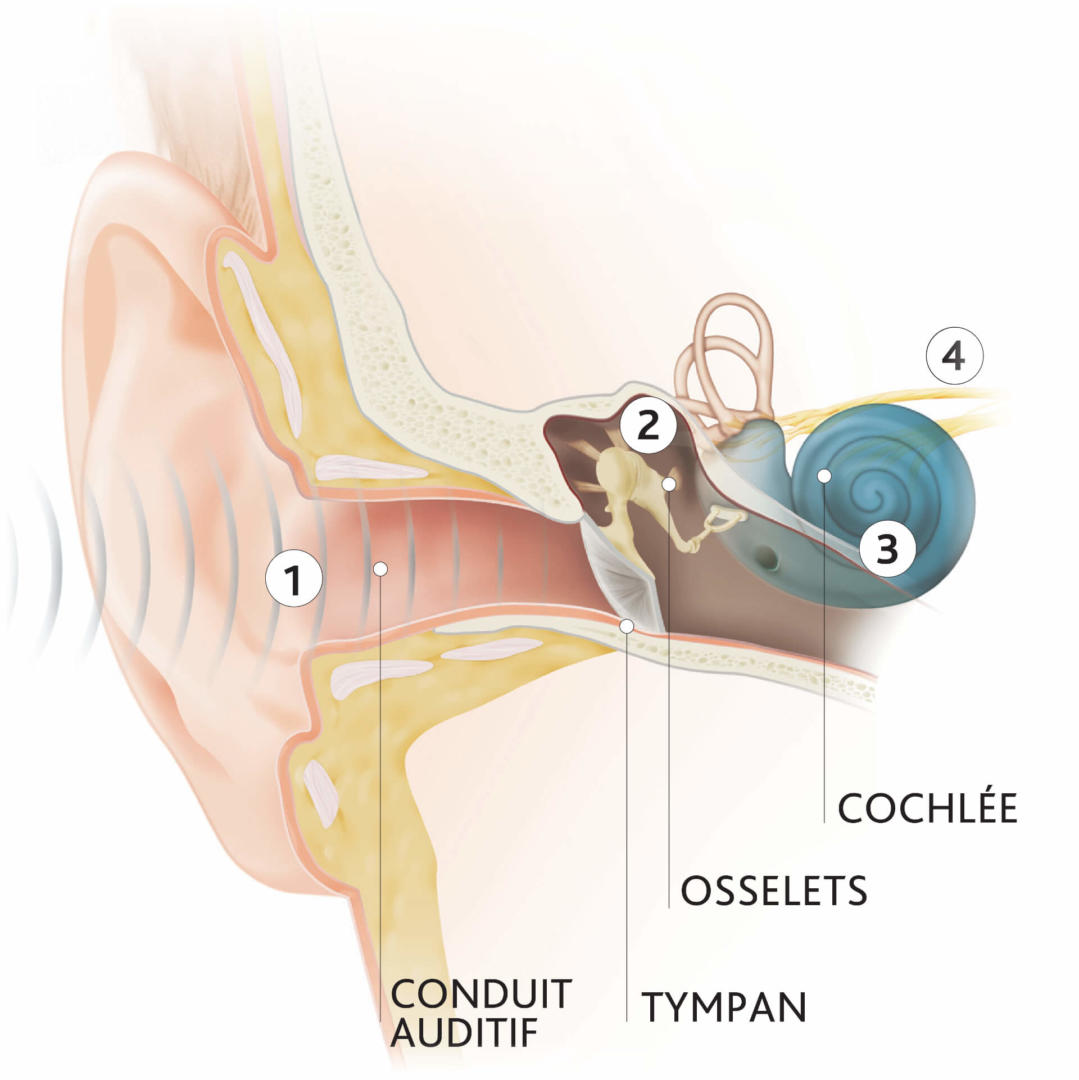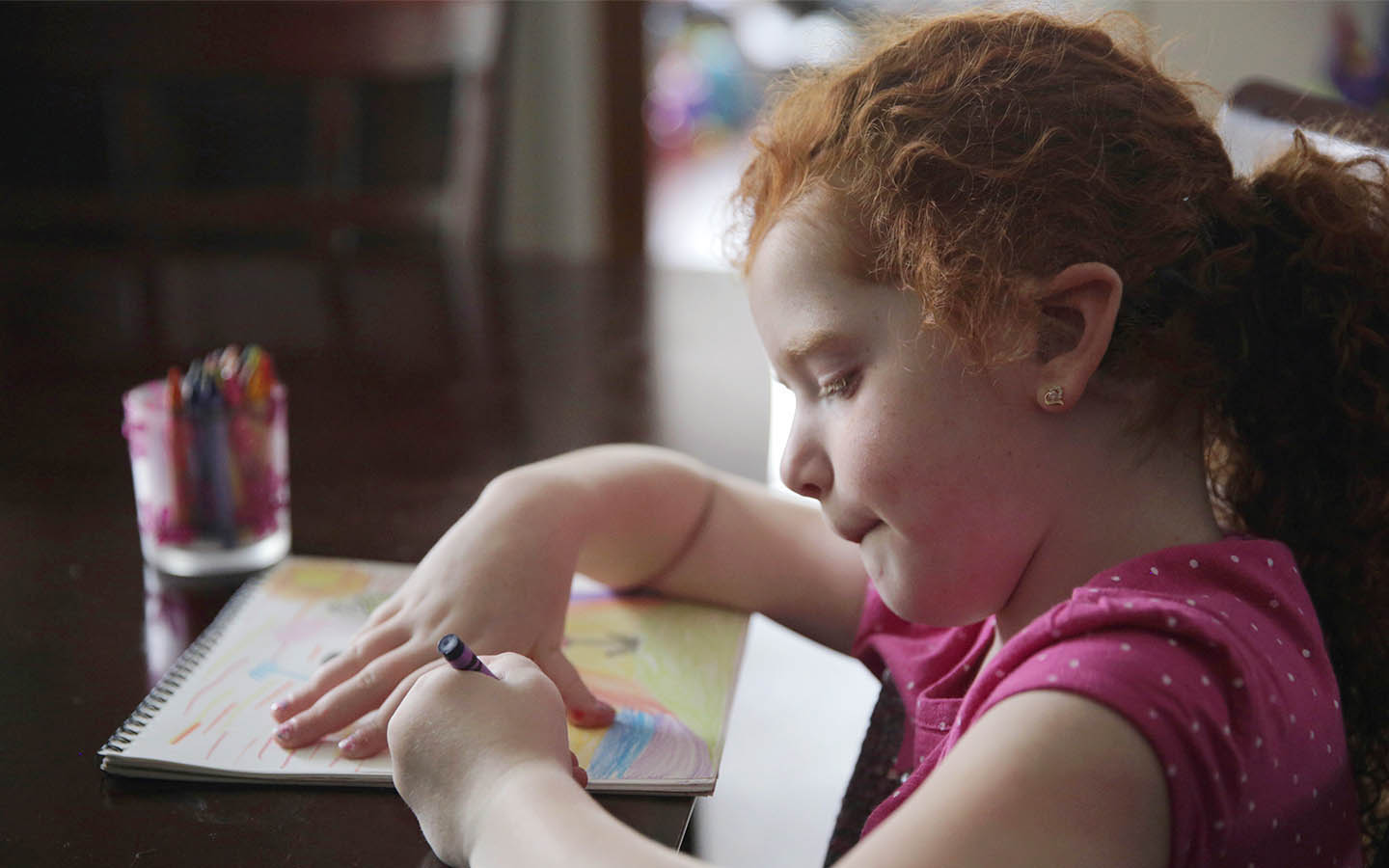How hearing works
Find out how hearing works with both ears in daily life.

Page contents
- How natural hearing works.
- Why both ears are needed to hear.
- The effects of hearing loss on daily life.
How hearing works
Although hearing is the process of sound travelling through the outer, middle and inner ear, it's the brain that interprets what is heard.
Each part of the ear plays an essential role in transmitting sound.
-
Outer ear – the part which can be seen (the pinna) and the ear canal.
-
Middle ear – the eardrum and three tiny connected bones (ossicles), which are often called the hammer, anvil and stirrup.
-
Inner ear – the snail-shaped cochlea and the hearing nerve, as well as semi-circular canals that help with balance.
- Sound waves enter the outer part of the ear and travel along the ear canal to the eardrum.
- The movement of the eardrum vibrates the ossicles in the middle part of the ear.
- These vibrations are transmitted to an organ filled with liquid; the inner ear called the cochlea.
- The tiny cilia lining the cochlea pick up this movement and send signals to the auditory nerve and then to the brain, where they are interpreted as sound.
Natural hearing depends on these parts working together. Hearing loss may occur when one of these parts has problems.
Hearing with both ears
The human body is a network of pairs: two eyes, ears, nostrils, arms, hands, feet and legs. The brain uses these pairs to coordinate and maximise how the body works.
Similarly, the ears work as a duo. The two ears enable sound to be located, volume to be distributed and loud sounds to be tolerated.
Being able to hear with both ears makes it easier to understand speech and tell where sounds are coming from.1
Hearing, communication and brain function
Hearing may be regarded as the first step in developing communications skills. It is thought that children learn to recognise a parent because as babies they begin to notice sounds in the womb. Hearing can be seen as a key part of learning to talk as children can learn by mimicking sounds.
Although hearing is not the only form of communication, hearing loss may affect speech and interaction.
For older people, hearing loss may be accompanied by other problems, including an inability to think clearly or remember. Hearing with both ears may help with understanding and locating the source of sounds.2
Disclaimer
Please seek advice from your health professional about treatments for hearing loss. Outcomes may vary, and your health professional will advise you about the factors which could affect your outcome. Always follow the directions for use. Not all products are available in all countries. Please contact your local Cochlear representative for product information.
For a full list of Cochlear’s trademarks, please visit our Terms of Use page.
References
- Litovsky RY, Johnstone PM, Godar SP. Benefits of bilateral cochlear implants and/or hearing aids in children. Int J Audiol. 2006; 45(Suppl): S78-91.
- https://www.hopkinsmedicine.org/news/media/releases/hearing_loss_linked_to_accelerated_brain_tissue_loss



